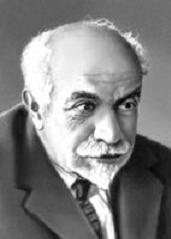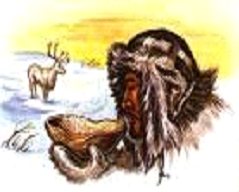What's a Life worth?
Michael Berman, UK
Michael Berman BA, MPhil (Wales), RSA Dip TEFLA, LTCL Dip TESOL is currently a full-time research student at Cardiff University and working as a part-time teacher at Oxford House College in London. Publications include A Multiple Intelligences Road to an ELT Classroom and The Power of Metaphor for Crown House Publishing and The Shaman and the Storyteller for Superscript. Michael has been involved in TESOL for over thirty years and has given presentations at Conferences in Austria, Azerbaijan, Croatia, the Czech Republic, Cyprus, Finland, France, Georgia, Germany, Ireland, Italy, Poland, Romania, Russia, Scotland, Slovenia, Spain, Turkey, the Ukraine, and Wales. E-mail: Michaelberman@blueyonder.co.uk, Website: www.Thestoryteller.co.uk
For more articles on shamanism by Michael Berman published in HLT see March 2007
In the shamanic story presented in this article a father, to save his life, gives his daughter's soul away, but ultimately she gets her revenge. It was told to Vladimir Bogoras by Ai´wan, a Maritime Chukchee man, at Mariinsky Post, October, 1900, and taken from Bogoras, W. (1910) Chukchee Mythology, Leiden & New York.
The term shamanic story is used here to describe a story that has either been based on or inspired by a shamanic journey (a numinous experience in non-ordinary reality) or one that contains a number of the elements typical of such a journey.
Vladimir Germanovich Bogoraz, (1865-1936) was a Russian writer and anthropologist, especially known for his studies of the Chukchee people. He had the opportunity to study them in North-Eastern Siberia from 1889-1899 when he was exiled there for what was labelled by the authorities as "revolutionary activity".
In the English language teaching classroom the story could perhaps be used as a springboard into a discussion on arranged marriages or belief in the supernatural. Alternatively, you might like to consider the following question with your class: What would you be prepared to sacrifice to save yourself if your life was at risk?

Vladimir Bogoraz
Sacrifice to the Sea
There lived one time a Maritime man. He had eight children. The youngest was a girl. One day he went to hunt walrus. A storm came up, and he was carried out to sea. He was tossed about and nearly drowned. Then he said to the sea, "Oh sea! calm yourself! Do so, that I may still look upon the world! I will give you the best that I have, the nearest to my heart, the foremost dog, the leader of the team, one with a spotted skin I will give you." The sea did not calm itself. "Oh, then, my youngest daughter, unmarried, a good one, clad in spotted skins! I will give her to you!" After that the sea smoothed down. He landed on the shore. Then he went up the shore, and entered the house. All the children were with him except the daughter, who still remained on the shore. The mother came out from the house. "Oh, oh, my child! you have roughed the storm!" She was quite sad. She looked down at the ground, and said, "Yes!" — "Come in, change your clothes, put on some dry ones." She entered, downcast, as before. Just as she changed her clothes, the father entered. He took her by the hand, took his spear, and went to the seashore. Then he turned to the sea, and said, "O sea! do not be angry. That which I promised, I give you now." He pierced her with the spear, and left the body lying there on the shore. An abundance of blood covered the whole beach. It grew dark. She is lying on the sand lifeless. A certain man, a kind of Sea-Being (A´ñqa-va´ịrġịn1) came to her and pushed her lightly with his toe. "Halloo! Get up! Let us go home!" Then after a little while, again, "Halloo! Get up! Let us go home!" At last she awoke and sat up: "Eġeġeġeġei´. I have slept quite long." He took her to his house and married her. They lived quite well and contented. They had a large reindeer-herd.
The daughter, of course, did not return home. Since the father said nothing, her mother thought, "Let me go and look for her! Where may she be?" She arrived at the place. The blood-stains were on the ground, but the body had disappeared. She found and followed some footprints along the seashore. At last she came to a cliff. The tracks ran upward to the very top. She climbed up, and found a settlement on the very top. Her daughter was busy scraping skins. "Oh, it is here you are staying?" — "Yes." She lived for some time with her daughter; then the daughter said, "Go and fetch father. I should like to see him also." The old man was brought and pampered with food. The next morning the sea was rough again. She said to her father, "Let us go and have a look at the sea!" They went to the very edge of the cliff. She said to him, "Look down upon the sea! How rough it is again!" He looked down upon the sea. She pushed him from behind, and he fell down, broke his back, and was taken by the sea. The end.
Told by Ai´wan, a Maritime Chukchee man, at Mariinsky Post, October, 1900 and taken from Bogoras, W. (1910) Chukchee Mythology, Leiden & New York.


Please check the Creative Methodology for the Classroom course at Pilgrims website.
Please check the Secondary Teaching course at Pilgrims website.


|